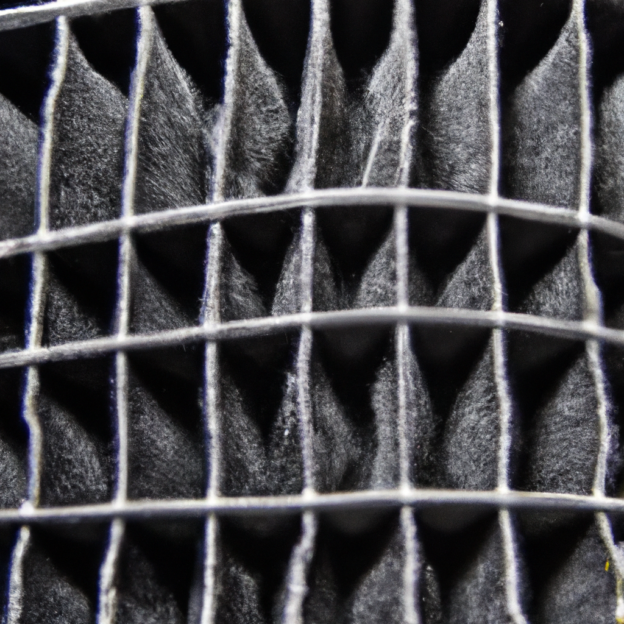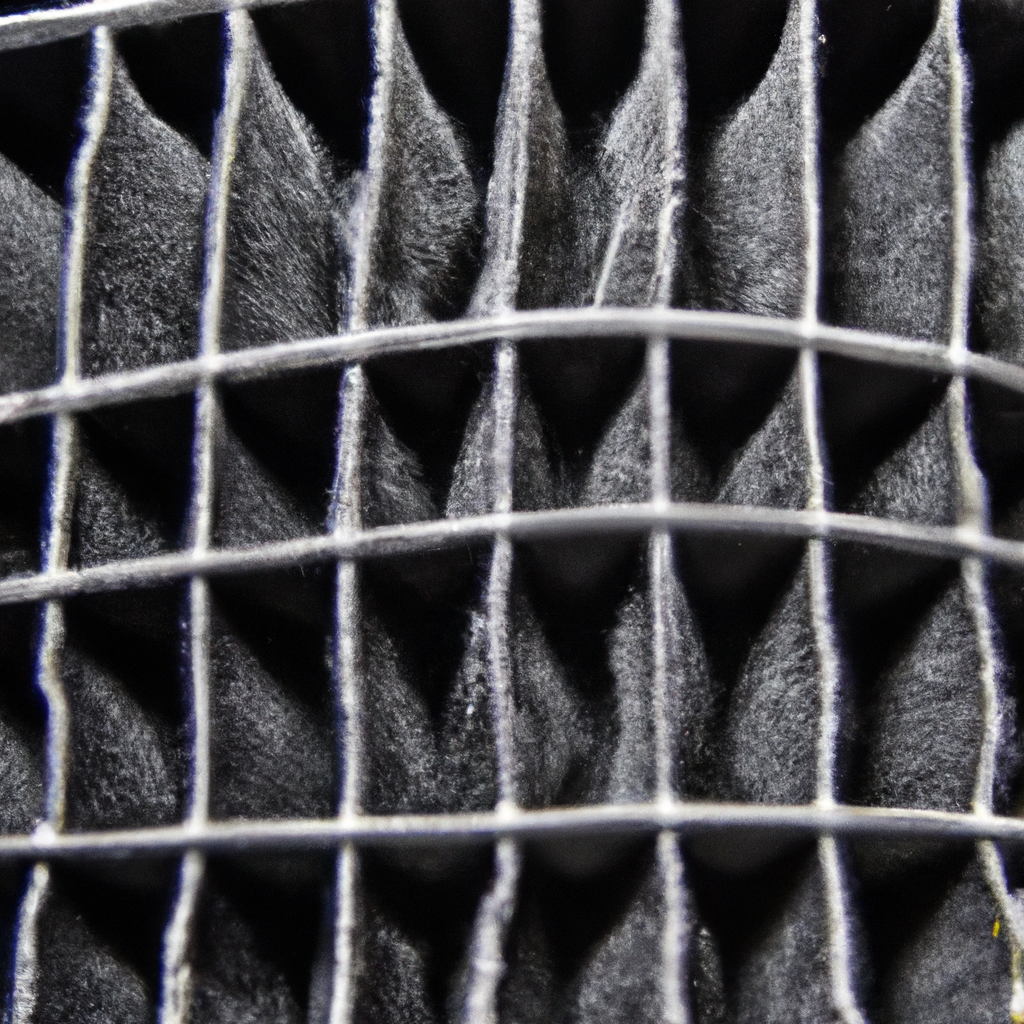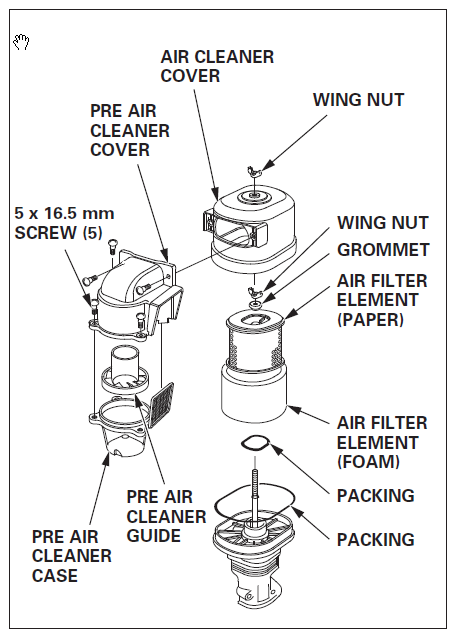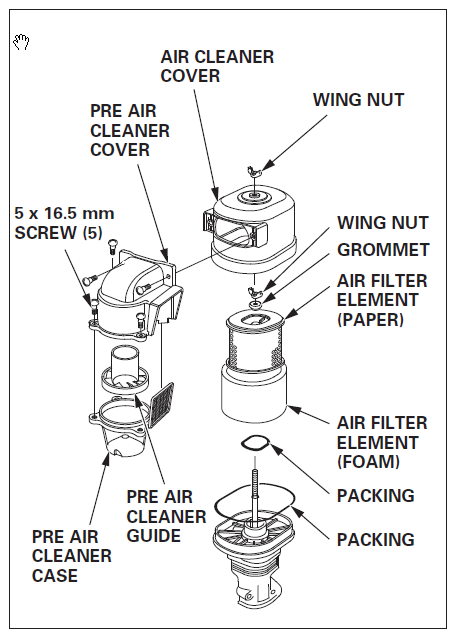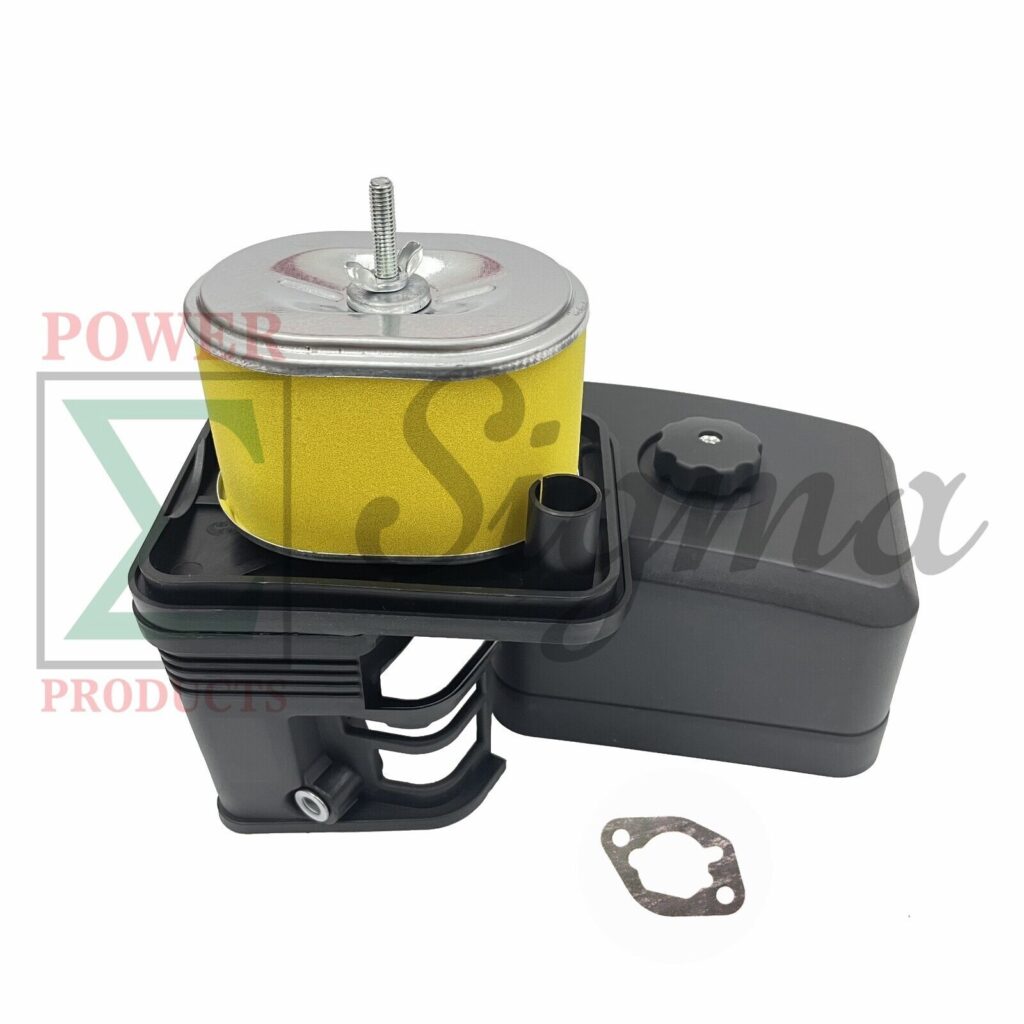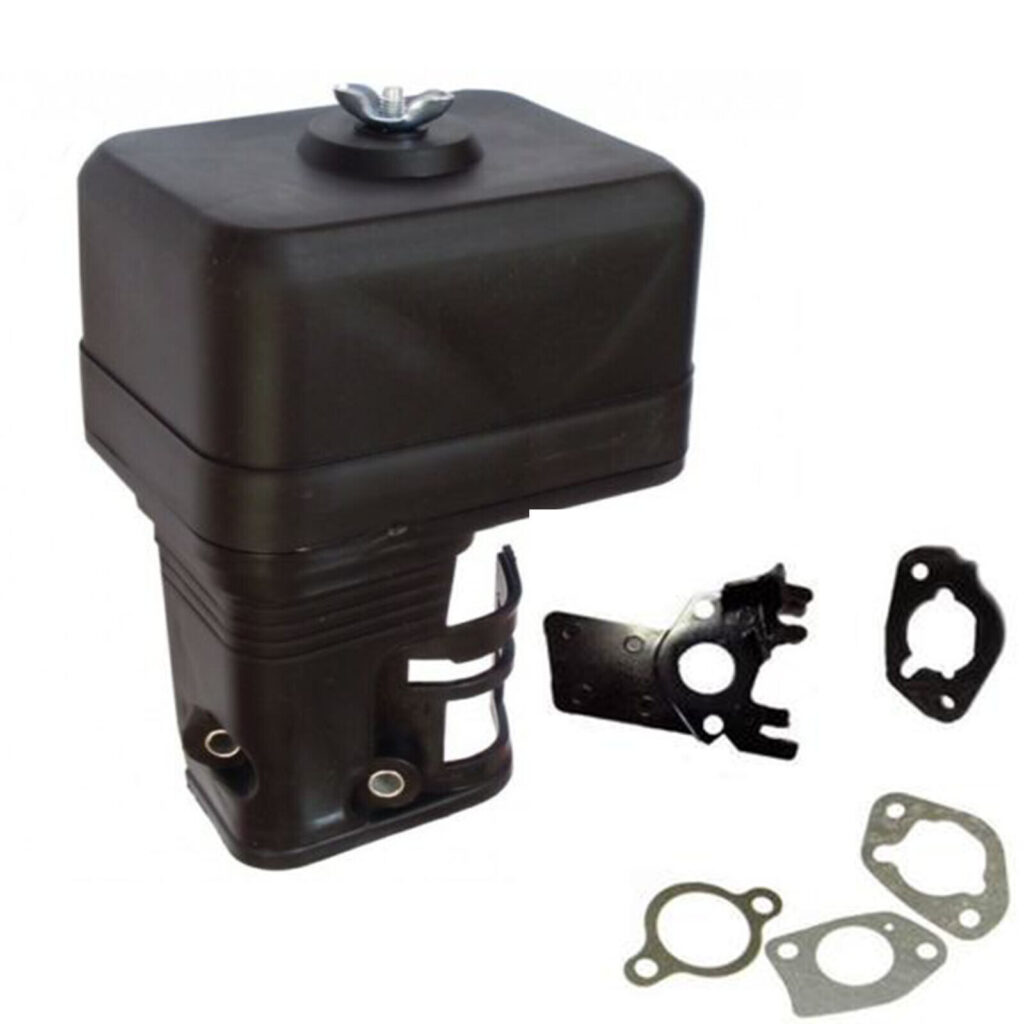So you’ve got a trusty snowblower to help you battle through those frosty winter days. But have you ever wondered how often you should be giving your snowblower’s air filter a good clean? Well, look no further for answers. In this article, we’ll uncover the importance of maintaining a clean air filter, the signs that suggest it’s time for a cleaning, and provide helpful tips on how frequently you should be tackling this task. So sit back, relax, and let’s get your snowblower ready to take on winter’s snowy onslaught!
Factors Affecting Air Filter Cleaning Frequency
Maintaining a clean air filter is crucial for the optimal performance and longevity of your snowblower. Several factors can affect how frequently you should clean your snowblower’s air filter.
Frequency of Use
The frequency with which you use your snowblower plays a significant role in determining how often you should clean the air filter. If you use your snowblower frequently, especially during heavy snowfall or in large areas, the air filter may accumulate dirt and debris more quickly. In such cases, it is advisable to clean the air filter more frequently to ensure uninterrupted performance.
Conditions of Use
The conditions in which you operate your snowblower also impact the cleaning frequency of the air filter. If you use your snowblower in dusty or dirty environments, such as areas with loose gravel or construction sites, the air filter is more likely to become clogged with debris. Similarly, operating the snowblower in wet or humid conditions can lead to the accumulation of moisture in the air filter, which may require more frequent cleaning.
Air Quality
The air quality in your location can have a significant impact on how often you should clean your snowblower’s air filter. If you live in an area with high levels of airborne pollutants, such as dust, pollen, or industrial emissions, the air filter is likely to become dirty faster. Regular cleaning is necessary to prevent the filter from becoming clogged, as a clogged filter can reduce the snowblower’s performance and potentially cause engine damage.
Type of Fuel Used
The type of fuel you use in your snowblower can also affect the cleaning frequency of the air filter. Some fuels, such as ethanol-blended gasoline, can leave behind residue that can accumulate on the air filter. This residue can restrict airflow and decrease the efficiency of the snowblower. If you consistently use fuels that are known to leave residue, you may need to clean the air filter more often to maintain optimal performance.
Signs That Your Snowblower’s Air Filter Needs Cleaning
Cleaning the air filter of your snowblower is essential to ensure its smooth operation. However, it can be challenging to determine exactly when the air filter needs cleaning. Here are some signs that indicate it’s time to clean your snowblower’s air filter:
Reduced Power and Performance
If you notice a decrease in the power and performance of your snowblower, it might be an indication that the air filter is dirty. A clogged air filter restricts airflow, which can lead to reduced engine power and diminished overall performance. Cleaning or replacing the air filter can help restore the snowblower’s power and efficiency.
Difficulty Starting
A dirty air filter can make it difficult for the snowblower to start. If you experience issues with starting your snowblower, particularly if it used to start easily before, the air filter may be clogged. Cleaning the air filter can remove any obstructions and improve the starting process.
Excessive Fuel Consumption
If your snowblower is consuming fuel at a faster rate than usual, it could be a sign of a dirty air filter. A clogged air filter restricts the airflow, causing the engine to run inefficiently and consume more fuel to generate the required power. Cleaning or replacing the air filter can help restore normal fuel consumption.
Dirty or Clogged Filter
A visual inspection of the air filter can also give you an indication of its cleanliness. If the filter appears dirty, clogged, or covered in debris, it is a clear sign that it needs cleaning. Removing the filter and cleaning it thoroughly can prevent further issues and ensure optimal performance.

Recommended Cleaning Schedule for Snowblower Air Filter
To ensure that your snowblower operates at its best, it is important to follow a regular cleaning schedule for the air filter. Here are some guidelines to help you establish a cleaning routine:
Manufacturer’s Recommendations
The manufacturer of your snowblower is the best source of information when it comes to maintenance recommendations, including cleaning the air filter. Read the owner’s manual or consult the manufacturer’s website to determine their specific recommendations regarding the cleaning frequency of the air filter.
Every 10 Hours of Use
As a general rule of thumb, it is recommended to clean your snowblower’s air filter every 10 hours of use. This interval provides a balance between ensuring optimal performance and avoiding excessive cleaning. Regular cleaning at this interval can help prevent debris accumulation and maintain the snowblower’s efficiency.
Monthly Inspection
In addition to the periodic cleaning every 10 hours of use, it is also advisable to inspect the air filter monthly. This visual check allows you to identify any signs of dirt or damage that may require immediate attention. Regular inspections can help catch issues early on and prevent major problems down the line.
Regular Visual Check
Make it a habit to visually inspect the air filter before each use of your snowblower. Look for any visible dirt, debris, or damage, and clean or replace the filter as needed. Regular visual checks ensure that the air filter is clean and in good condition, promoting optimal performance.
Step-by-Step Guide: How to Clean a Snowblower’s Air Filter
Cleaning the air filter of your snowblower is a relatively simple process that can be done at home. Follow these step-by-step instructions to clean your snowblower’s air filter effectively:
Step 1: Gather Required Tools
Before you begin, gather the necessary tools and supplies. You will need protective gloves, safety eyewear, a clean cloth or brush, and compressed air (optional). Having these tools easily accessible will make the cleaning process efficient and safe.
Step 2: Turn off the Snowblower
Ensure that the snowblower is turned off and the engine is cool before attempting to clean the air filter. This step is crucial to prevent any accidental injuries or damage to the snowblower.
Step 3: Remove the Air Filter Cover
Locate the air filter cover on your snowblower. It is usually located near the engine and can be identified by its distinctive shape and design. Remove the cover carefully by unscrewing or unclipping it, depending on the model of your snowblower.
Step 4: Inspect the Air Filter
Once the cover is removed, visually inspect the air filter for dirt, dust, or debris accumulation. Shake the filter gently to dislodge any loose particles. If the filter is excessively dirty or damaged, it may need to be replaced instead of cleaned.
Step 5: Clean the Air Filter
If the air filter is relatively clean, you can proceed with cleaning it. Use a clean cloth or brush to remove the visible dirt and debris from both sides of the filter. Ensure that all the dirt is removed, but be careful not to damage the filter material in the process.
Step 6: Reinstall the Air Filter
After cleaning the air filter, carefully place it back in position. Ensure that it fits snugly and is correctly aligned with the filter housing. If the filter requires any special installation or alignment, refer to the manufacturer’s instructions.
Step 7: Replace the Air Filter if Necessary
If the air filter is heavily damaged, excessively dirty, or cannot be adequately cleaned, it is recommended to replace it with a new filter. Check the owner’s manual or consult the manufacturer to ensure you purchase the correct replacement filter for your specific snowblower model.

Precautions to Take When Cleaning a Snowblower’s Air Filter
While cleaning the air filter of your snowblower is a relatively straightforward task, it is essential to take certain precautions to ensure your safety and avoid damage to the equipment.
Wearing Protective Gloves and Eyewear
Before you start the cleaning process, put on protective gloves and safety eyewear. This will protect your hands and eyes from any dirt, debris, or harmful particles that may be present on the air filter or within the snowblower.
Cleaning in a Well-Ventilated Area
Ensure that you clean the air filter in a well-ventilated area. This will prevent the inhalation of any dust or particles that may be released during the cleaning process. Cleaning in a well-ventilated space also helps minimize the exposure to cleaning solvents or compressed air fumes if used.
Avoiding Damage to the Air Filter
Take care not to damage the air filter while cleaning it. Use gentle, sweeping motions with a cloth or brush to remove dirt and debris. Avoid excessive force that may tear or distort the filter material. Damaged filters may not provide adequate filtration and can compromise the performance of your snowblower.
Using Compressed Air Carefully
If you choose to use compressed air to clean the air filter, use caution. High-pressure air can damage or dislodge delicate filter material. Hold the compressed air nozzle several inches away from the filter and blow air in short bursts. This will help remove any stubborn debris without causing damage.
Other Maintenance Tips for Keeping Your Snowblower in Top Condition
In addition to regular air filter maintenance, there are several other essential maintenance tasks to keep your snowblower in top condition. Incorporating these tasks into your overall maintenance routine will ensure that your snowblower operates reliably and efficiently:
Regular Oil Changes
Regularly changing the oil in your snowblower is crucial for maintaining its smooth operation. Consult the owner’s manual for the recommended oil change intervals and use the appropriate oil specified by the manufacturer. Clean oil lubricates the engine and keeps it running smoothly, reducing wear and tear.
Inspecting and Adjusting Drive Belt Tension
Inspecting and adjusting the drive belt tension is necessary to ensure proper traction and power transfer in your snowblower. Over time, the drive belt can become loose or stretched, leading to reduced efficiency. Regularly inspect the drive belt and adjust the tension as recommended by the manufacturer.
Checking and Replacing Spark Plugs
Spark plugs play a vital role in the ignition process of your snowblower’s engine. Regularly inspecting and cleaning spark plugs can help maintain efficient combustion and prevent issues like misfires or difficulty starting. If the spark plug is excessively worn or damaged, it should be replaced with a new one.
Cleaning the Carburetor
A clean carburetor is essential for proper fuel delivery and combustion in the snowblower’s engine. Over time, the carburetor can become clogged with dirt, debris, or fuel deposits. Regularly cleaning the carburetor or using a fuel additive can prevent clogging and ensure optimal engine performance.
Benefits of Cleaning Your Snowblower’s Air Filter Regularly
Regularly cleaning your snowblower’s air filter offers a range of benefits that positively impact its performance and longevity.
Improved Performance and Efficiency
A clean air filter allows for optimal airflow, ensuring efficient combustion within the snowblower’s engine. This leads to improved performance and enhanced fuel efficiency. By removing any dirt or debris that may restrict airflow, you can ensure that your snowblower operates at its best during the winter season.
Longer Lifespan of Engine
A clogged or dirty air filter can negatively impact the lifespan of your snowblower’s engine. Restricted airflow can cause the engine to work harder, potentially leading to overheating or premature wear and tear. Cleaning the air filter regularly reduces strain on the engine and helps prolong its lifespan.
Reduced Risk of Damage and Costly Repairs
A clean air filter prevents debris and dirt from reaching the internal components of the engine. By keeping the engine free from contaminants, you reduce the risk of damage to critical parts, such as the piston or cylinder. This reduces the likelihood of costly repairs and extends the overall lifespan of your snowblower.
Enhanced Safety and Reliability
A properly maintained air filter contributes to the overall safety and reliability of your snowblower. By ensuring optimal engine performance, you minimize the chances of unexpected breakdowns or malfunctions while operating the snowblower. This allows you to clear snow from your property with confidence and peace of mind.
Different Types of Air Filters for Snowblowers
Snowblowers can utilize various types of air filters, each with its own characteristics and benefits. Understanding the different types can help you choose the most suitable filter for your snowblower:
Foam Filters
Foam filters are commonly used in snowblowers due to their excellent filtration capabilities. They are designed to trap fine particles and debris effectively while allowing free airflow. Foam filters are generally washable and reusable, making them a cost-effective option in the long run.
Paper Filters
Paper filters are another common type used in snowblowers. They are typically disposable and offer good filtration performance. Paper filters can effectively trap larger particles and debris, providing adequate protection to the engine. Regular replacement is necessary to ensure optimal performance and maintain the snowblower’s efficiency.
Mesh Filters
Mesh filters, often made of metal or synthetic materials, are known for their durability and resistance to damage. They offer good filtration performance and are capable of capturing larger debris effectively. Mesh filters are generally washable and reusable, making them a suitable option for those looking for a more sustainable choice.
Cone Filters
Cone filters, also known as high-performance filters, are designed to provide superior filtration and airflow. They feature a cone-shaped design that maximizes surface area, allowing for increased filtration capacity. Cone filters are often made of high-quality materials and can offer enhanced performance in challenging operating conditions.
When to Replace Your Snowblower’s Air Filter
While regular cleaning is essential to maintain the air filter’s performance, there are instances where replacement becomes necessary. Here are some signs that indicate it’s time to replace your snowblower’s air filter:
Signs of Irreparable Damage
If the air filter is damaged beyond repair, such as tears, holes, or significant deformation, it is crucial to replace it immediately. A damaged filter cannot effectively filter the incoming air, putting the engine at risk of damage.
Excessive Wear and Tear
Over time, air filters can experience wear and tear, affecting their filtration and airflow capabilities. If you notice signs of significant deterioration, such as worn-out filter material or reduced structural integrity, it is advisable to replace the air filter.
Manufacturer’s Recommendations
Always refer to the manufacturer’s recommendations regarding the replacement intervals for your snowblower’s air filter. Filters should be replaced according to the guidelines provided by the manufacturer to ensure optimal engine performance and reliability.
Lack of Efficiency despite Cleaning
If you have thoroughly cleaned the air filter and it still does not exhibit proper filtration or airflow, it may be time to replace it. A filter that cannot be adequately cleaned or shows no improvement in performance after cleaning indicates that it has exceeded its useful life.
Conclusion
Regular maintenance and cleaning of your snowblower’s air filter are vital to ensure its optimal performance and longevity. By understanding the factors affecting air filter cleaning frequency, identifying signs that indicate the need for cleaning, and following a recommended cleaning schedule, you can keep your snowblower operating at its best.
Taking precautions when cleaning the air filter, such as wearing protective gear and working in a well-ventilated area, is essential for safety and effectiveness. Additionally, incorporating other maintenance tasks, such as regular oil changes and inspecting critical components, helps keep your snowblower in top condition.
By cleaning your snowblower’s air filter regularly, you can benefit from improved performance, extended engine lifespan, reduced risk of damage, and enhanced safety and reliability. Be aware of the different types of air filters available and know when it’s time to replace the filter to maintain optimal filtration and airflow.
As a responsible snowblower owner, taking care of your equipment through proper air filter maintenance and overall maintenance routine ensures long-term benefits, efficient snow clearing, and peace of mind throughout the winter season.

